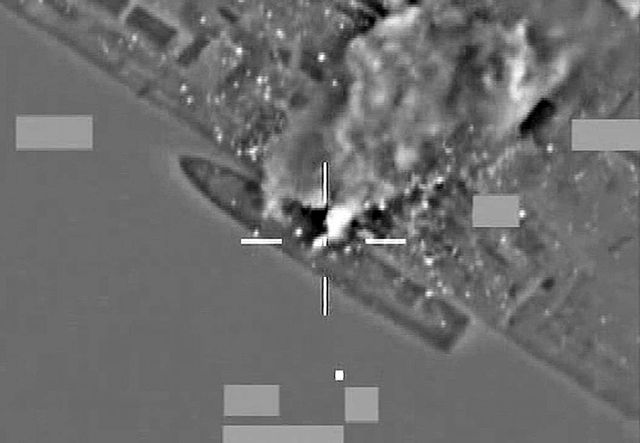Operation Ellamy was the codename for the United Kingdom participation in the 2011 military intervention in Libya. The operation was part of an international coalition aimed at enforcing a Libyan no-fly zone in accordance with the United Nations Security Council Resolution 1973 which stipulated that "all necessary measures" shall be taken to protect civilians. The coalition operation was designated by NATO as Operation Unified Protector, by the US as Operation Odyssey Dawn. The Canadian participation as Operation Mobile and the French participation as Opération Harmattan. It was confirmed in December 2011 that the cost of the operations was £212m – less than was estimated, including £67m for replacing spent munitions, is all expected to be met from the Treasury reserve.
RAF Tornado GR4 attacks a warship in Al Khums naval base, 20 May 2011
Apache helicopter takes off from HMS Ocean during Operation Ellamy
RAF Tornado GR4 aircraft during Operation Ellamy
RAF Tornados destroying Libyan radar station
2011 military intervention in Libya
On 19 March 2011, a multi-state NATO-led coalition began a military intervention in Libya to implement United Nations Security Council Resolution 1973, in response to events during the First Libyan Civil War. With ten votes in favour and five abstentions, the intent of the UN Security Council was to have "an immediate ceasefire in Libya, including an end to the current attacks against civilians, which it said might constitute 'crimes against humanity' ... [imposing] a ban on all flights in the country's airspace — a no-fly zone — and tightened sanctions on the Muammar Gaddafi regime and its supporters."
Libyan anti-government rebels, 1 March 2011
USS Barry fires a Tomahawk cruise missile on 19 March 2011.
Palmarias of the Libyan Army, destroyed by French air force near Benghazi, 19 March
Damage to aircraft shelters at Ghardabiya Airfield near Sirte, 20 March








